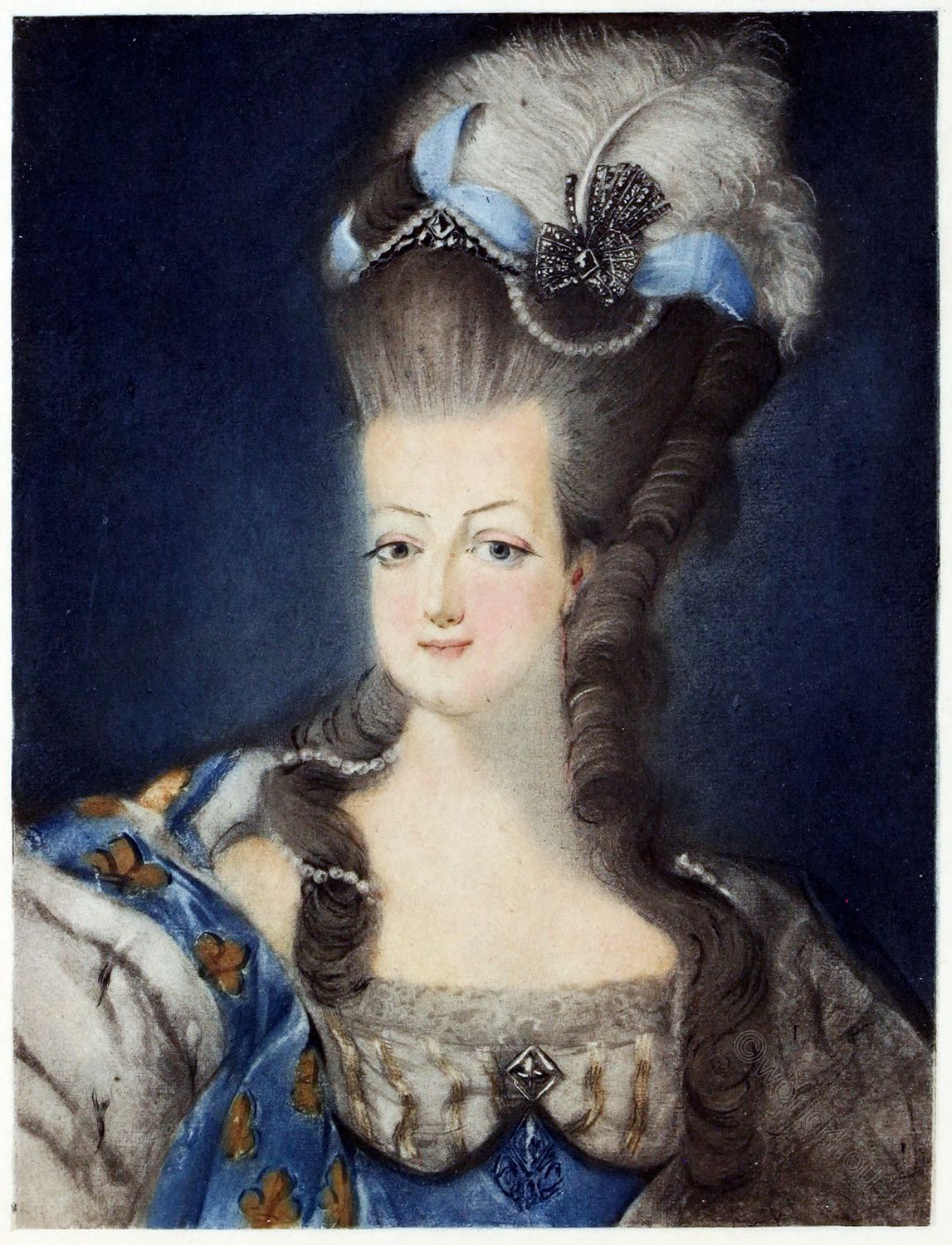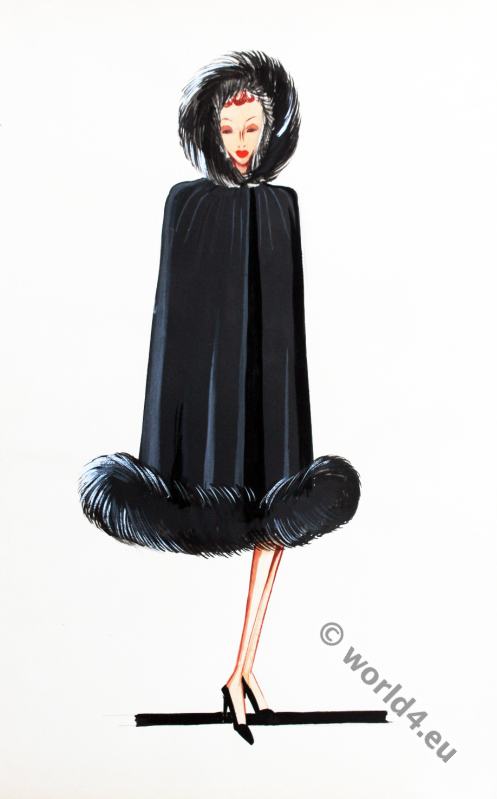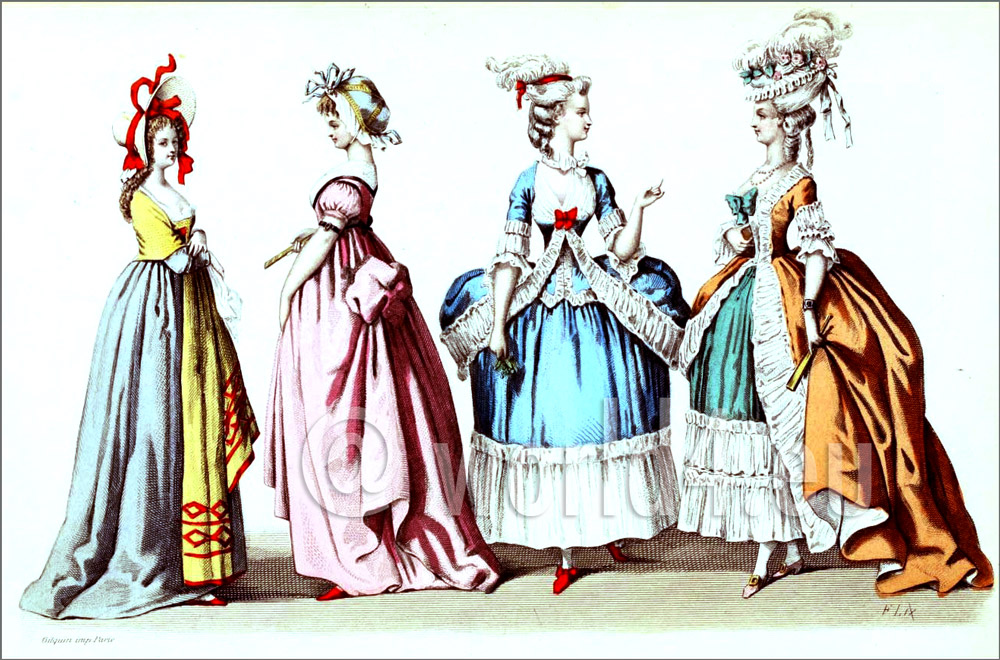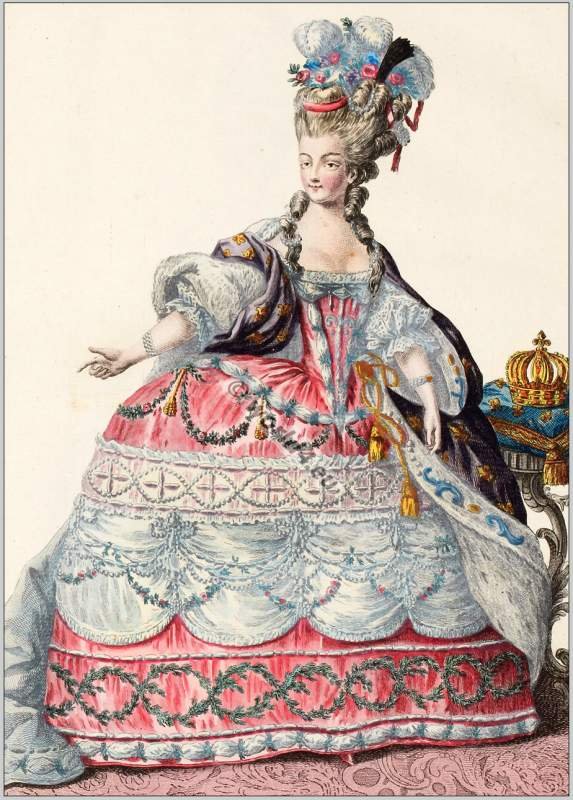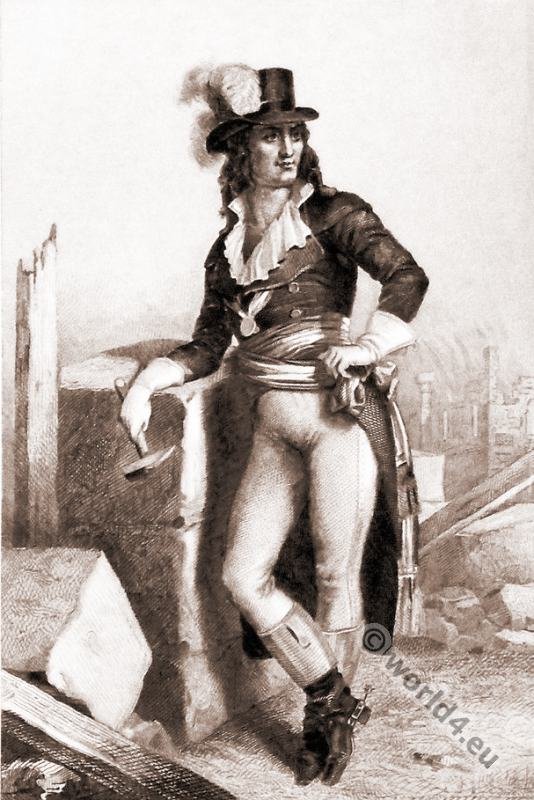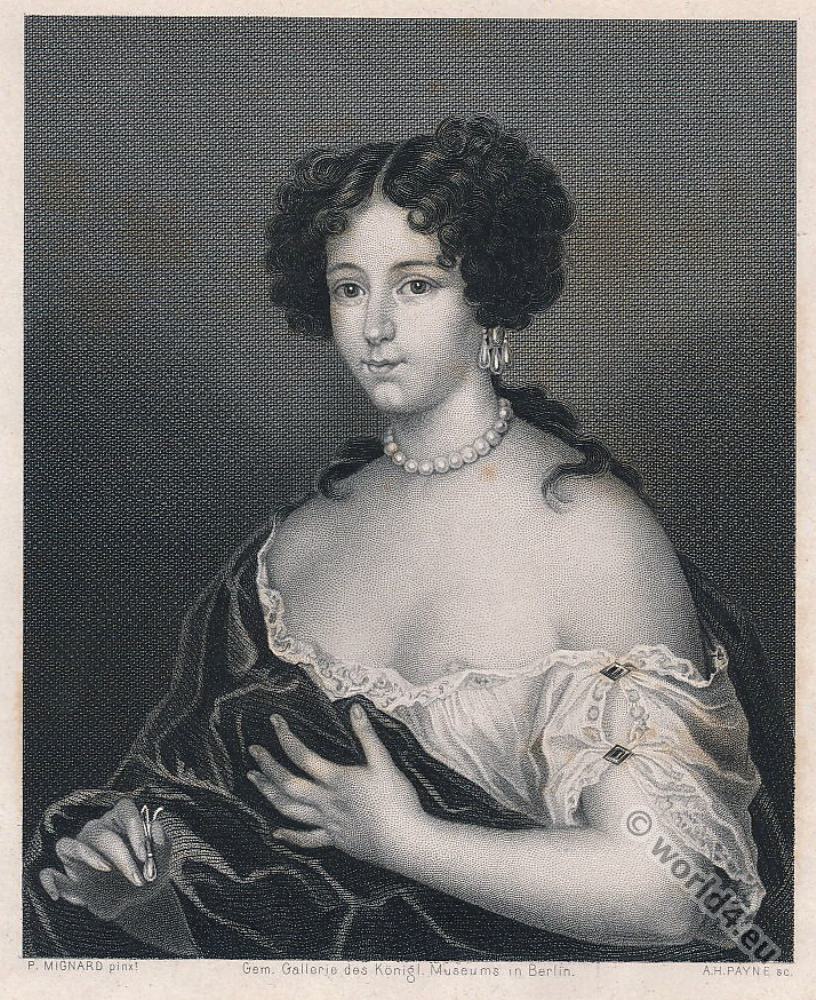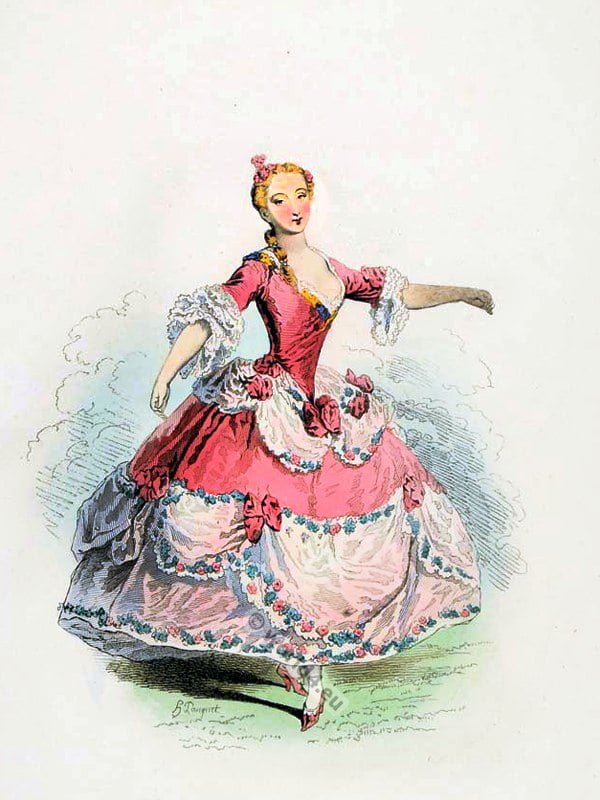
Marie Sallé (1707-1756). French Ballet Danseuse in 1730.
Marie Sallé was a French dancer, time companion and rival of Marie Camargo.
Marie Sallé grew up in the milieu of the Paris fairground theater. Her father was a minor carnival dancer or acrobat. 1718 she made her debut at the Foire Saint-Laurent in Paris in “La Princesse de Carisme”, a comic opera by Alain Lesage.
Later she became a student of Françoise Prévost. Subsequently, from 1725 to 1727, she went to London. Only after she had sensational successes there, she was engaged at the Paris Opera. Her debut in the opera she had on 14 September 1727 in a pas de deux with David Dumoulin.
“Modes et Costumes Historiques“. Drawing by Xavier Willemin. Edited and steel engraving by Hippolyte Louis Emile and Polidor Jean Charles Pauquet. Published by Cassell, Petter & Galpin London, 1864
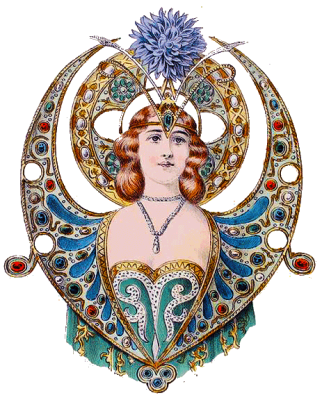
Continuing
Discover more from World4 Costume Culture History
Subscribe to get the latest posts sent to your email.

